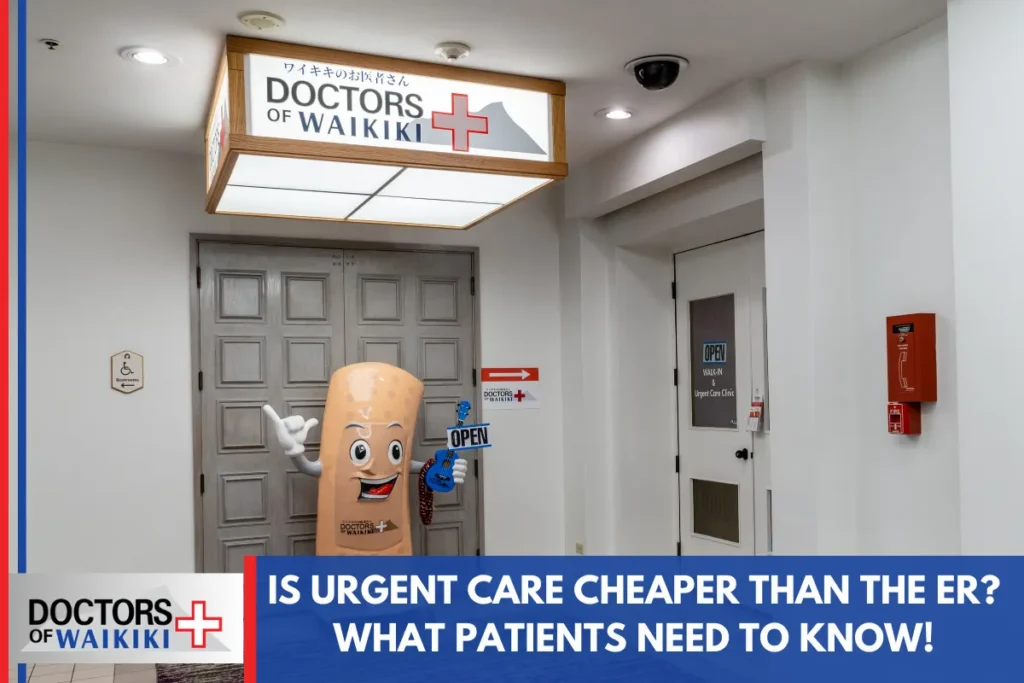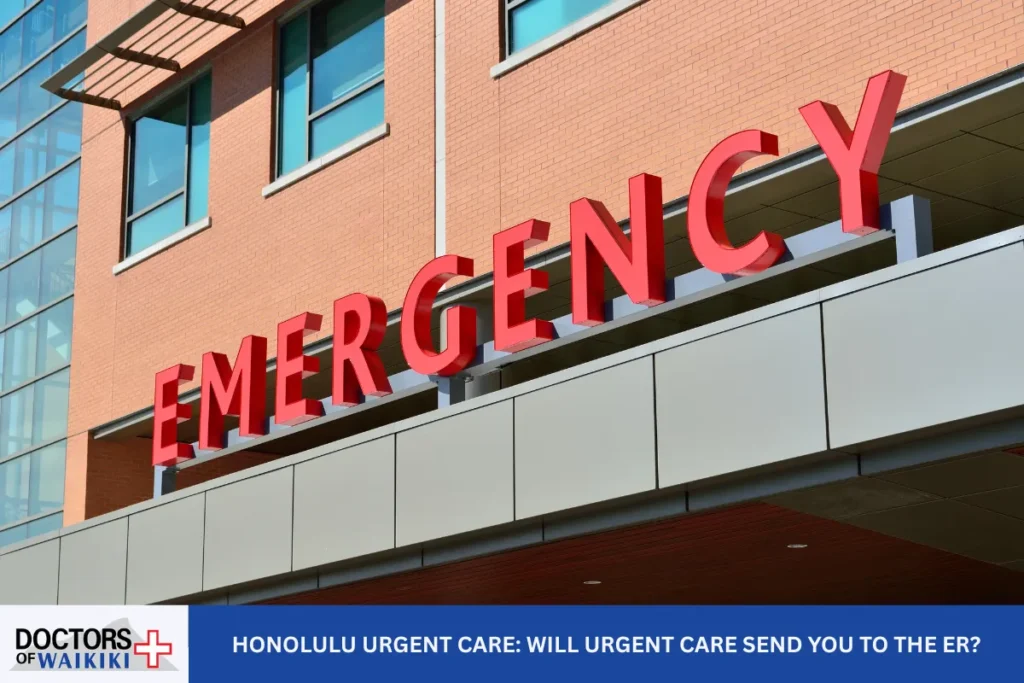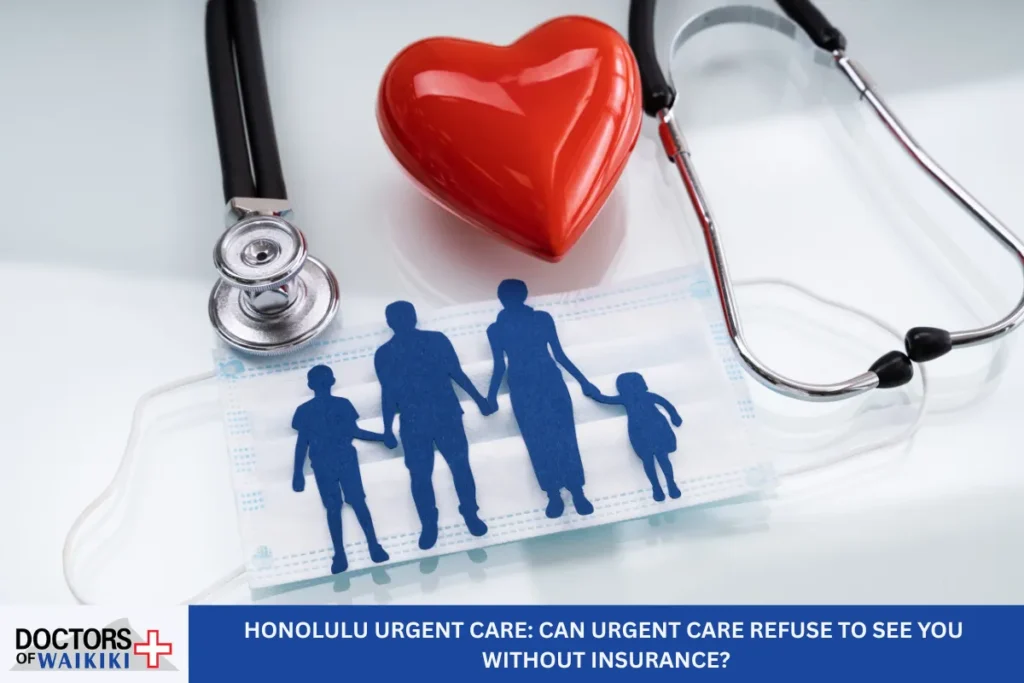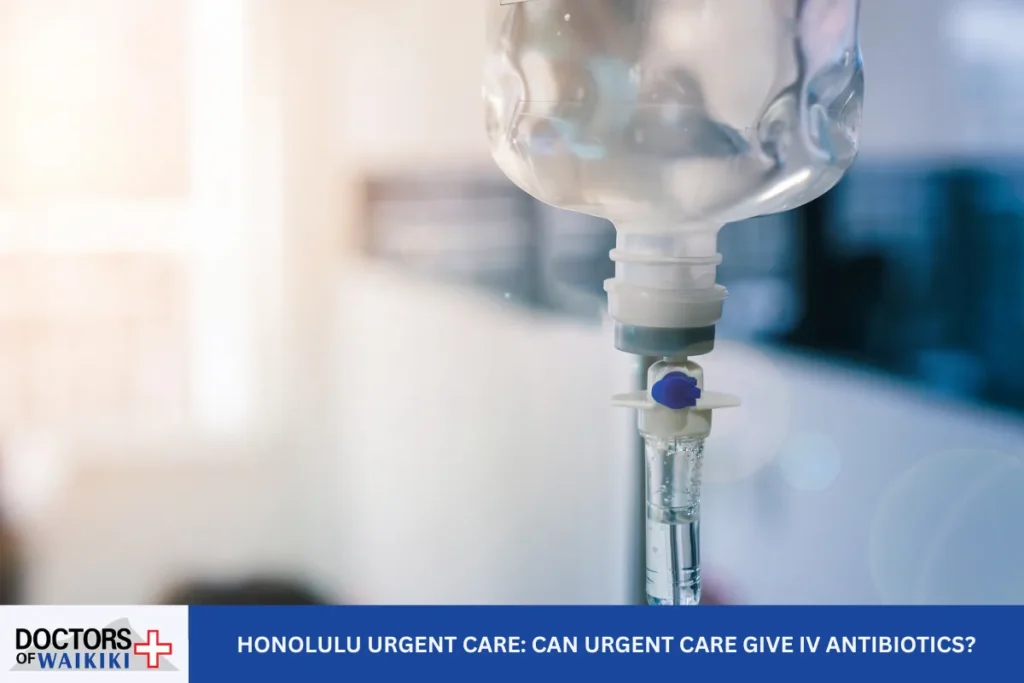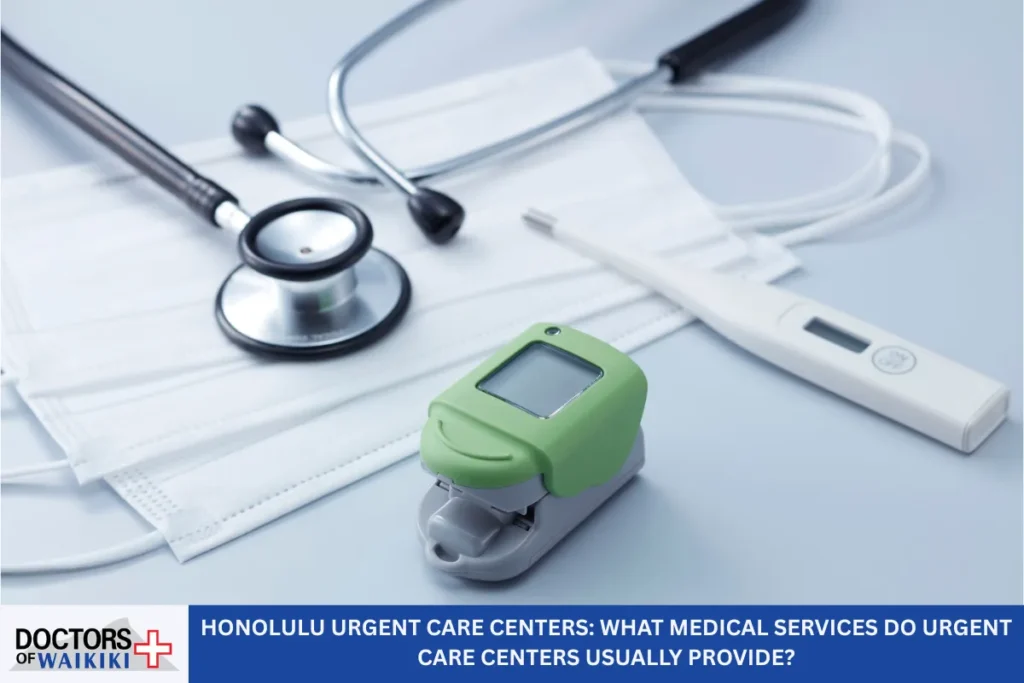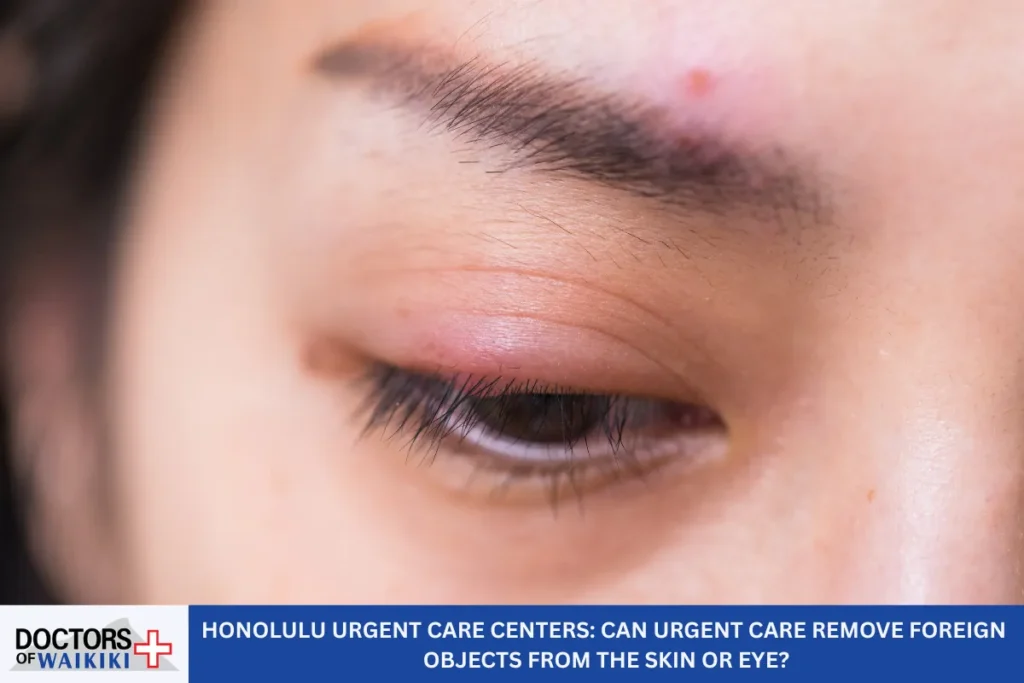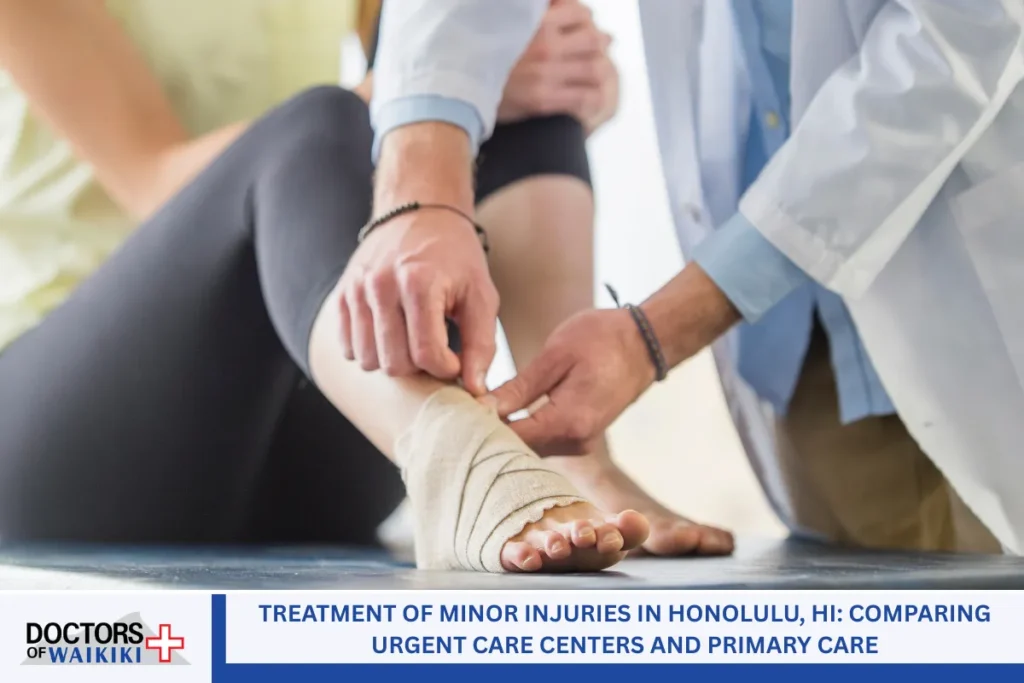Healthcare can feel confusing and expensive, especially when you’re not sure where to go when you’re feeling sick or hurt. One of the biggest questions people ask is: “Is urgent care cheaper than the ER?” The short answer is yes, but there’s more to it than just cost. This article breaks it all down—what urgent care is, how it’s different from the emergency room, how much both cost, and when to choose one over the other. Let’s help you save money and get the care you need—without the stress.
Why the Right Choice Matters in Medical Emergencies

We all know that medical bills can get really high, especially in the United States. If you don’t have insurance or if you’re on a tight budget, picking between urgent care and the emergency room can be a big deal. Knowing the differences can help you make a smart choice, save hundreds—or even thousands—of dollars, and still get the right help fast.
What’s the Difference Between Urgent Care and the Emergency Room?

Urgent Care: Quick Help for Non-Emergencies
Urgent care centers are walk-in clinics that treat things like:
- Coughs and colds
- Minor cuts or burns
- Sprains or twisted ankles
- Ear infections
- Sore throats or pink eye
These clinics are open longer than regular doctor’s offices—many are open nights and weekends. Most visits are pretty fast, and you don’t need an appointment. If your health issue isn’t life-threatening but still needs attention soon, urgent care is a great option.
Emergency Room: Life-Saving Care, Anytime
The ER is where you go for very serious health problems. This includes:
- Chest pain or trouble breathing
- Bad injuries or heavy bleeding
- Broken bones sticking out
- Seizures or head trauma
- Signs of stroke (numbness, slurred speech)
ERs are open 24/7 and have the tools to handle big emergencies, but that level of care comes at a higher cost and longer wait times—especially if your condition isn’t urgent.
How Much Does Urgent Care Cost Compared to the ER?

The price difference between urgent care and emergency rooms can be huge.
- Urgent Care: Usually between $100 and $250 if you’re paying yourself
- Emergency Room: Can cost $750 to $3,000 or more—even for something simple like a cut or fever
If you have insurance, the copay for urgent care might be just $25 to $75, while an ER visit could come with a copay of $300 or more. And if you’re uninsured? The ER can quickly become unaffordable.
What Makes the Cost Go Up or Down?
Several things affect your final bill:
- Whether you have health insurance
- If the clinic or hospital is in your insurance network
- What kind of tests or procedures are done
- The location—big cities usually cost more
- Time of day or weekend rates
In general, urgent care centers offer more affordable pricing, especially if you’re paying out of pocket or have a high-deductible insurance plan.
What If You Don’t Have Insurance?

If you don’t have insurance, urgent care is almost always the better choice. Many centers offer:
- Flat-rate pricing (like $125 for a basic visit)
- Discounts for cash payments
- Payment plans or sliding scales based on income
ERs, on the other hand, often charge facility fees just for walking in the door, and those can be hundreds of dollars—not counting the doctor’s fee, tests, or medications. And yes, they will bill you even if you’re not admitted.
Real people online have shared stories about getting bills over $4,000 for minor injuries that urgent care could have treated for less than $200.
When Should You Go to Urgent Care or the ER?

Knowing where to go can save you both money and time. Here’s a quick guide:
Choose Urgent Care If You Have:
- Colds, flu, or COVID-like symptoms
- Minor cuts that might need stitches
- Sprained ankles or sore muscles
- Rashes or mild allergic reactions
- Earaches, sore throats, or UTIs
Head to the ER If You’re Experiencing:
- Chest pain or trouble breathing
- Sudden confusion or numbness
- Serious head injury or fainting
- Broken bones poking through the skin
- Heavy bleeding that won’t stop
Urgent care can treat a lot, but they may send you to the ER if they believe your situation is more serious. In that case, it’s better to go directly to the emergency room if you’re unsure and think it’s life-threatening.
Other Things to Think About Besides Cost

1. Wait Times
Urgent care usually has shorter wait times—sometimes less than 30 minutes. At the ER, you may wait hours if others have more serious emergencies.
2. Tools and Tests
Emergency rooms have more advanced machines (like MRIs and CT scans). Urgent care centers have X-rays and labs, but not the same level of equipment.
3. Opening Hours
ERs are open 24/7. Urgent care is open late but not overnight. Still, they’re a great option for evenings and weekends.
4. Doctor Follow-Up
Urgent care visits may not always connect back to your regular doctor. Some clinics now offer better record-sharing systems, but not all. ERs in hospitals often do.
How to Make the Smartest Choice for Your Health and Budget

It’s easy to feel unsure when you’re not feeling well and need care fast. But by understanding the differences between urgent care and the emergency room, you can make the right decision that protects both your health and your wallet.
Urgent care centers are best for quick, non-life-threatening situations—and they’re usually far less expensive. If you know your symptoms aren’t severe, urgent care is often the smartest, safest choice. You’ll get seen faster, pay less, and still receive quality treatment from trained medical professionals.
Emergency rooms are essential when something truly serious is going on. But they should be used for actual emergencies because of their high costs and longer wait times. If you’re ever unsure, many insurance companies offer nurse hotlines or apps to help guide you to the right place based on your symptoms.
Plan Ahead So You’re Ready When It Counts
Here are a few simple things you can do before you need care:
- Find urgent care clinics near you now and save their addresses and hours
- Check which centers accept your insurance or offer self-pay discounts
- Ask your doctor’s office which urgent care they recommend
- Download your insurance app to check network providers and copay costs
- Teach your family or roommates when to choose urgent care vs. the ER
Thinking ahead can save you money and stress. When something comes up, you won’t waste time deciding where to go.
Final Thought: Urgent Care Is Often the Right Care

When you’re sick or injured but it’s not life-threatening, urgent care centers are your best bet. They’re designed to help you quickly, without the huge cost of an ER visit. With lower prices, shorter wait times, and professional care, urgent care is a smart option for most everyday health needs.
Remember: urgent care isn’t just cheaper—it’s also faster and easier in many situations. Save the ER for emergencies, and let urgent care help you stay healthy without breaking the bank.
Honolulu Urgent Care – Doctors of Waikiki

Looking for fast, affordable, and compassionate urgent care in Honolulu? At Doctors of Waikiki, we’re here when you need medical attention—without the long wait or high cost of an emergency room visit. Whether you’re dealing with flu symptoms, a minor burn, insect bites, or a urinary tract infection, our skilled team of health care professionals is ready to help. We provide walk-in clinic services for non-life-threatening issues, offering same-day treatment with shorter wait times and personalized care.
Located in the heart of Waikiki, we’re your trusted choice for urgent care services in Honolulu. Don’t risk high emergency room costs for a common illness or injury. Call us today at (808) 922-2112 or stop by—your health matters, and we’re here to make it simple, affordable, and stress-free. Get the care you need, when you need it—right here at Doctors of Waikiki.
Frequently Asked Questions About Urgent Care
Can I visit urgent care without insurance?
Yes, you can visit urgent care facilities without insurance. In fact, many walk-in clinics are used to helping patients who don’t have a comprehensive health plan. The average cost of a basic urgent care visit ranges from $100 to $250, depending on the type of treatment and the clinic’s pricing. While this is still a significant pocket cost, it’s far less expensive than emergency room costs, which can run into the hundreds to thousands.
Some urgent care centers offer discounted self-pay rates, payment plans, or sliding scale fees based on income. You can call ahead to ask about pricing for specific medical services like treating flu symptoms, minor fractures, or insect bites.
Urgent care is a good option for non-life-threatening issues like a urinary tract infection, eye irritation, or strep throat—conditions that still need medical attention but don’t require a trip to the nearest emergency facility. If you don’t have insurance, urgent care can offer affordable health care with same-day appointments, making it easier to access a primary care provider quickly and without a long wait.
Why do people go to the ER instead of urgent care?
People go to the emergency room instead of urgent care services for a few key reasons—some valid, some due to confusion or lack of access.
1. Life-Threatening Emergencies
When someone is experiencing loss of consciousness, stroke symptoms, severe injuries, or pregnancy complications, it’s best to go to the emergency room, where advanced diagnostic tools and emergency care professionals are available 24/7.
2. Uncertainty About Symptoms
Sometimes, it’s hard to know whether symptoms are serious or not. A severe headache, sudden abdominal pain, or chest tightness might seem minor but could be signs of something more dangerous.
3. Limited Access to Care
Not everyone has a primary care doctor or knows where their nearest urgent care facility is located. ERs are always open and easy to find, making them a default choice for many in an urgent situation.
4. Lack of Insurance Knowledge
Some people believe emergency care is automatically covered by insurance, even if the condition turns out to be non-urgent. However, care at emergency rooms often carries higher staffing costs and can cost significantly more than an urgent care center visit.
Are urgent care visits covered by insurance?
Yes, most urgent care center visits are covered by major insurance providers, but your insurance coverage depends on your individual plan. Many health care professionals at urgent care accept comprehensive health plans, HMOs, or PPOs, and your annual deductible, copay, and coinsurance rates will affect what you pay.
For example:
- With insurance: You may pay a copay of around $30 to $75
- Without insurance: You might be charged an average cost of $100 to $250
It’s always smart to check your provider’s list of in-network medical centers before visiting. Some plans cover more if you go to a preferred or network-approved walk-in clinic.
Also, remember that preventive care and primary care visits may be handled differently than urgent care services, so your pocket cost might vary.
If you’re dealing with common illnesses like respiratory infections, a sinus infection, or minor burns, urgent care is a great option that gets you faster treatment than many hospital emergency departments. Just bring your insurance card and ID, and ask about billing if you’re unsure.
Can I be turned away from urgent care if I can’t pay?
Unlike hospitals, urgent care centers are not legally required to treat patients who can’t pay upfront. Most urgent care facilities are privately owned, so if you arrive without insurance or payment ability, some may ask for payment before providing medical treatment for non-life-threatening conditions.
That said, many clinics do offer:
- Discounted self-pay rates
- Flexible payment options
- Sliding scale fees for low-income patients
Some even partner with local programs to offer care at reduced rates. But if your condition is critical—such as severe burns, stroke symptoms, or life-threatening injuries—you should go to the nearest emergency care facility. Hospitals are required by law to stabilize you, regardless of ability to pay.
It’s a good idea to call ahead and ask about pricing or payment options. If you’re dealing with something like a skin infection, animal bite, or urgent conditions like flu symptoms, affordable health care is still within reach through many walk-in clinics.
Does urgent care accept Medicaid or Medicare?
Yes, many urgent care facilities accept Medicaid and Medicare, but it depends on the location and the clinic. Before visiting, it’s best to call the walk-in clinic and ask if they accept your type of plan.
For those with Medicare Part B, medically necessary urgent care services—such as treatment for minor fractures, insect bites, or common injuries—are typically covered. You’ll still be responsible for 20% of the Medicare-approved amount, after your deductible is met.
With Medicaid, each state has its own coverage rules. In most cases, non-emergency medical care like strep throat or eye irritation is included, but your state’s Medicaid website or provider directory can confirm which urgent care centers are approved.
While not all urgent care clinics accept government insurance, many do. These centers often provide affordable health care for individuals who need care quickly but don’t want to deal with the high costs of emergency room visits or hospital emergency departments.
Is it cheaper to go to urgent care for X-rays?
Yes, getting an X-ray at an urgent care facility is almost always cheaper than getting one at the emergency room. On average, an X-ray at urgent care may cost between $50 and $150, while the same X-ray at the ER could cost $500 to over $1,000, especially once staffing costs and facility fees are included.
The type of treatment and the area of the body being examined also impact the price. For example:
- A chest X-ray for respiratory infections
- An arm or leg X-ray for minor fractures or injuries
- Dental or jaw X-rays for trauma after a fall
Urgent care centers have trained health care professionals, including nurse practitioners and physician assistants, who can review X-rays and offer quick results. They’re ideal for non-life-threatening issues like insect bites, a twisted ankle, or minor burns.
If your primary care doctor isn’t available or you need same-day appointments, urgent care is an excellent choice for diagnostic tools like X-rays. Just remember, if the injury looks serious (like a bone poking through skin), go straight to the nearest emergency center for emergency care.
Can urgent care send me to the ER if needed?
Yes, if a walk-in clinic or urgent care provider believes your condition is beyond their capability, they will refer or send you to the emergency room immediately. While urgent care is great for treating common symptoms like flu, skin infections, or strep throat, they are not equipped to handle life-threatening conditions.
Urgent care centers usually don’t have surgical rooms, blood transfusion units, or advanced imaging like MRIs. If you arrive with:
- Loss of consciousness
- Stroke symptoms
- Severe headache that may suggest internal bleeding
- Abdominal pain with fever or vomiting
- Signs of pregnancy complications or heart problems
They’ll often stabilize you and call for emergency transport to the nearest emergency care facility.
These clinics are staffed with health care professionals trained to recognize signs of serious illness or severe injuries. They may also give you a medical summary or tell the hospital what they found.
While urgent care facilities focus on faster treatment and lower costs for non-emergency medical care, they’re also an important first step in helping patients get to the right place when something more serious is happening.
Are there risks in going to urgent care for serious conditions?
Yes, there can be risks if you go to urgent care when you’re actually facing a serious or life-threatening emergency. While urgent care services are helpful for non-urgent care like sinus infections, insect bites, or eye irritation, they are not designed for treating severe injuries, major trauma, or life-threatening emergencies.
If you visit urgent care for symptoms such as:
- Chest pain
- Loss of consciousness
- Severe abdominal pain
- Slurred speech or confusion
- Heavy bleeding
You may experience delays in getting the emergency care you need. These delays can worsen your condition, especially if you’re having a stroke, heart attack, or internal bleeding. Urgent care centers do not have operating rooms, ICUs, or access to all diagnostic tools found in hospital emergency departments.
In these cases, it’s better to skip urgent care and head straight to the nearest emergency room, where doctors are prepared to handle life-threatening conditions.
However, if you’re unsure whether your issue is serious, urgent care can serve as a starting point. They can evaluate you and, if needed, transfer you quickly for advanced medical treatment at an emergency care facility.
Read Beyond Pills: Exploring Holistic and Alternative Pain Management Methods

